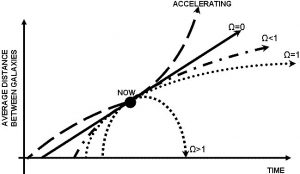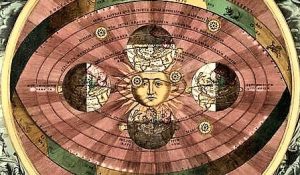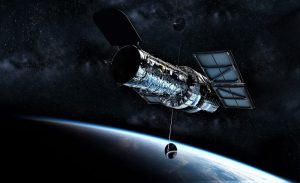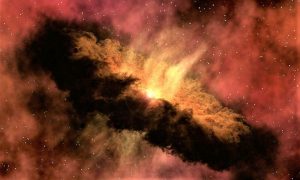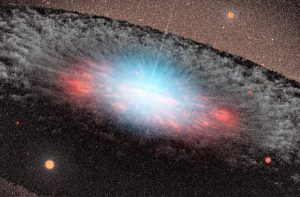Hubble’s law
Hubble's law is a law that measured the distances between galaxies and was given that name by the surname of a prestigious astronomer known in the twentieth century. Edwin Powell Hubble was responsible for its formulation and the law leads us to the model of the universe that is expanding and, going back in time, to the Big Bang theory. It was first formulated in 1929.
What is Hubble's law?
It is a law that states that the greater the distance a galaxy has, the greater the speed at which it moves away from us, so it tells us that the large objects in our universe are constantly moving away from each other causing an invariable expansion.
Who proposed Hubble’s law
Hubble’s law was first formulated by Edwin Hubble in 1929. He made different comparisons to contrast the distances between the galaxies with their respective displacements due to the recession that existed between them, obtaining as a result that between both magnitudes, there was a linear relationship and the coefficient of proportionality being the constant of Hubble.
Background
The main antecedents of Hubble’s law were the observations made by different physicists and mathematicians who studied the relationship between space and time by means of the equations Einstein had created regarding general relativity.
In 1922, Alexander Friedman showed that the universe had the ability to expand at a speed that could be calculated by equations. This factor was known as the scale factor and gave a proportionality constant to the law.
The idea of the existence of space-time developed with greater force and led to the creation of cosmological theories such as the Big Bang and the Stationary State.
Before modern cosmology developed, there were great debates and discussions about the size and shape of the universe. In 1920, there was a famous debate between Harlow Shapley and Heber D. Curtis on the subject. Shapley believed in the idea of a small universe of the same size as the Milky Way, and Curtis thought the universe was larger. The subject of the debate would be resolved in the next decade with Hubble’s improved observations.
History
In 1925, American astronomer Edwin Hubble demonstrated to the scientific community that there was more in the universe than the Milky Way, and that there were many groups of stars that were separated from our world.
Then, in 1929, Hubble announced a new discovery that completely changed astronomy. With the advantage that the telescopes had been improved, Hubble began to notice that the light coming from these galaxies moved toward the red end of the spectrum due to the Doppler effect which indicated that the galaxies were actually distancing themselves from us.
Hubble concluded that galaxies and galaxy clusters were moving away from each other at great speed, and that the universe was therefore growing in size. In fact, all the galaxies we see are slightly red due to displacement.
Hubble’s law explanation
The law states that our universe is composed of many different galaxies, and that these galaxies have movements that have their origin in a single point, also provides a concise method to make measurements about the speed of a galaxy with respect to ours. The law has managed to demonstrate that as galaxies are at a greater distance from each other, they can move away from each other at an ever-increasing speed.
He explains that all galaxies move away from our planet depending on the distance they possess. This theory contradicted the theory that our universe was static.
An easy way to understand it is to imagine a half inflated balloon, the balloon represents the universe time after the Big Bang. We are in the center of the globe. If we continue to inflate the balloon, which is equivalent to the passage of time, we will be able to see that all the points of the balloon move away from us, as Hubble’s law explains.
Formula
Hubble’s law consists of an equation that states that: Speed = Ho x distance, in other words, that speed is the galaxy’s recession speed. In the formula Ho is a constant, known as the Hubble constant and is the one which tells the rate of expansion that the universe has. The distance represents the difference between the galaxy and the other galaxy with which the comparison is being made. Ho=70 kilometers/second per mega parsec or 3.26 million light years.
Constant
It is the constant of proportionality that is given in mathematical form about Hubble’s law. Previously, it was shown with a fixed value number, but over time the parameter has varied. Through the equations of the theory of general relativity it can be proved that the age of the universe is related to the Hubble constant and to the universe.
What are the problems with Hubble’s law?
The main problem to disagree Hubble’s law is the most forced extrapolation is the cosmological one. Perhaps the theory has some systematic errors in our way of estimating H (0) from H (1100). In addition, our universe has changed a lot in the last 13.4 billion years.
Another phenomenon against the law is known as singularity. At present, physics laws do not postulate the Big Bang as an event that has a scientific explanation, or at least they do not do it in the time period prior to 10-43 of the first second. Physicists call this space of time the Planck wall.
How to cite this article?
Briceño V., Gabriela. (2019). Hubble’s law. Recovered on 3 May, 2025, de Euston96: https://www.euston96.com/en/hubbles-law/
